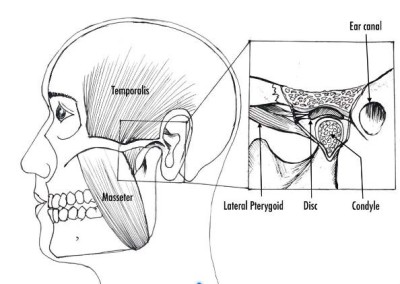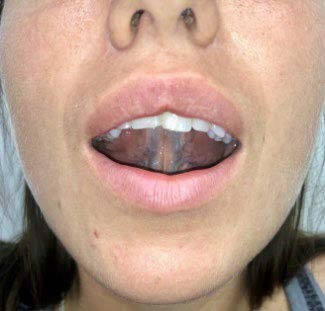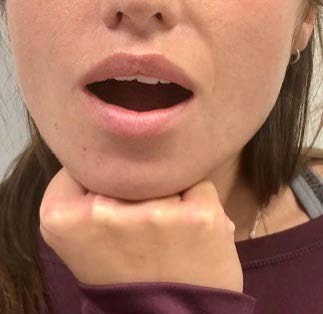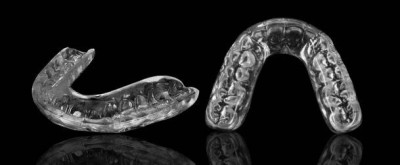This information sheet answers common questions about jaw joint problems. If you would like further information, or have any worries, please do not hesitate to ask your nurse or doctor.
In all cases, a doctor will explain the diagnosis and management techniques to you and answer any questions you may have during the appointment.

What is the temporomandibular joint (TMJ)?
The temporomandibular joint (TMJ) is located between the lower jaw and the skull on either side of the head. It helps to open and close the jaw and is the most frequently used joint in the body. The muscles attached to the TMJ help to control the movement of the jaw.

What are temporomandibular disorders (TMD)?
Temporomandibular disorders (TMD) are a group of disorders which can affect the jaw joint (TMJ) and/or the surrounding muscles. It is a relatively common disorder which will usually get better without treatment. TMD most commonly affects young adults but can occur in all age groups. It often flares up when a person is stressed or anxious.
What causes TMD?
Potential causes may include:
- Previous trauma to the joint
- Stress related habits such as clenching or grinding of the teeth
- Bone disorders such as arthritis
- Misaligned teeth or imbalanced bite due to loss of teeth
- Floppy joints, for example due to connective tissue conditions such as EhlerDanlos syndrome
What are the features of TMD?
Signs and symptoms that you may notice include:
- Clicking or crunching of the joint
- Pain in front of the ear, in the cheeks, down the neck or up to the head
- Headaches or earaches
- Difficulty opening the mouth wide
- Locking of the jaw
At home management techniques
TMD is usually a temporary discomfort which will get better on its own. The following steps can help reduce the pain during an episode:
- Avoid hard and/or chewy foods.
- Avoid habits like chewing gum, biting fingernails, and chewing pen lids.
- Hold a heat pack to the painful area.
- Apply topical ibuprofen gel to the painful areas and gently massage (as advised by your doctor).
- Try not to clench or grind your teeth.
- Keep your upper and lower jaw apart at rest.
- Try relaxation techniques like meditation, yoga, or mindfulness.
- Improve your posture when sitting or standing.
How physiotherapy can help
Exercises for the jaw can help strengthen surrounding muscles to reduce the stress on the joint. These exercises should be performed daily for maximum effect.
You should complete the following exercises four times each day. Using a mirror while doing this can help you maintain good technique.
Exercise one
- Curl the tip of your tongue to the roof of your mouth and move the tongue towards the soft palate.
- Without moving your tongue, open your mouth and hold for four seconds.
- Repeat this exercise four times daily.

Exercise two
- Place your fist underneath your chin.
- Apply gentle pressure to the chin.
- Open your mouth slowly against this pressure so your chin presses against your fist. Hold this position for four seconds.
- Repeat this exercise four times daily.

The role of your dentist
You should see your dentist regularly to assess your teeth and gums. Your dentist can give you information on suitable jaw exercises and advise on the replacement or repair of missing, broken, or decayed teeth to maintain a balanced bite.
They can also provide you with a night guard to wear which protects your teeth from grinding and clenching while sleeping and may help to improve your symptoms.

 Translate
Translate